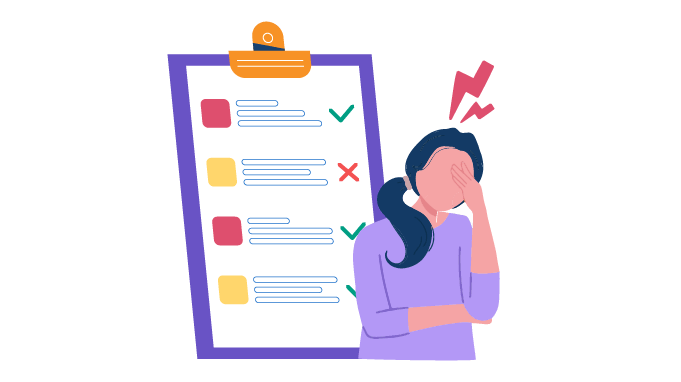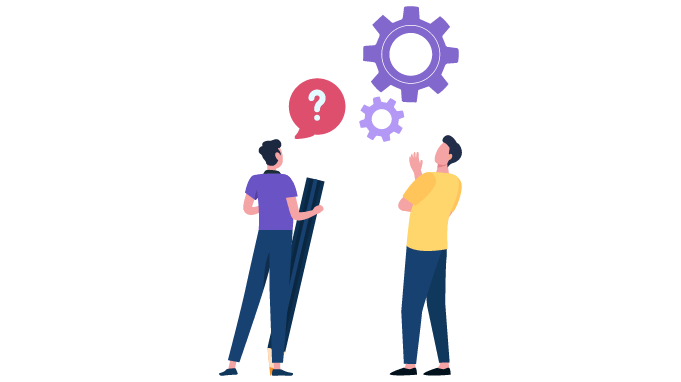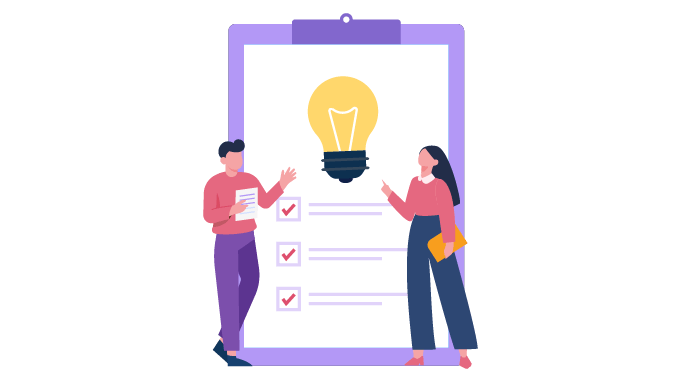What is Survey Fatigue and 8 Tips to Avoid It
Have you ever felt exhausted just thinking of filling out another survey? If so, you're not alone. Those questionnaires just keep on coming—the annual engagement survey, the training feedback form, those random pulse checks—it never stops! This constant demand for input leads to a state of exhaustion known as employee survey fatigue. Survey fatigue is a real phenomenon that affects both respondents and survey creators alike.
In this blog, we'll discuss survey fatigue, its adverse effects, and, most importantly, eight tips to help you avoid it.
What Is Employee Survey Fatigue?

The survey fatigue definition can be explained as the follows:
Survey fatigue is the apathy, disengagement, or lack of motivation experienced by survey respondents due to receiving too many survey requests or excessively long questionnaires.
It typically results in lower response rates, careless or rushed responses, and survey abandonment - all of which compromise the quality and accuracy of survey data.
The same can be said for employee survey fatigue too. Employees experiencing respondent fatigue will affect the company culture in the following ways:
Ill Effects Of Survey Fatigue
Firing off an employee survey here and there seems harmless, but it can lead to serious consequences if the frequency is not monitored.
It can bring major challenges that mess up your whole data game. Here are a few ill effects of Survey fatigue
-
Low Response Rates: When employees are over-surveyed and fatigued, respondents either won't start or finish the surveys you send them, making it more difficult for you to gain meaningful feedback.
-
Rushed, Inaccurate Responses: When fatigued, respondents are more likely to rush through surveys, leading to inaccurate or incomplete responses. This compromises the quality of data collected, rendering the survey results unreliable.
-
Biased & Skewed Data: With survey fatigue, your data gets filtered through a very specific lens—the extremely satisfied employees who want to praise and the burned-out ones who want to vent. That huge contingent of so-so middle-grounders is totally excluded, leaving you with a heavily skewed picture.
-
Impact on Engagement: Bombarding employees with endless surveys can go from "feedback is valued" to "okay, this is just too much" quickly. Instead of boosting dialogue, you risk becoming that frustrating company that kills morale through endless nagging.
-
Negative Impact on Respondent Experience: Survey fatigue can result in a negative experience for respondents. It may make them feel overwhelmed, frustrated, or annoyed, affecting their perception of the survey and the organization conducting it.
-
Diminished Trust in Future Surveys: If respondents have a poor experience with one survey due to fatigue, they may be less likely to participate in future surveys from the same organization.
-
Missed Opportunities for Improvement: Surveys are valuable tools for gathering insights and feedback. However, when respondents are fatigued, they may not provide the constructive feedback necessary to identify areas of improvement, hampering organizational growth and innovation.
At the end of the day, thoughtful employee surveying should be a tool for understanding and engaging your workforce. But when fatigue creeps in, the whole thing backfires, messing up the data, straining employee relations, and leaving you with an inaccurate view of organizational health.
Balancing the frequency and relevance of surveys is crucial for maintaining a positive relationship with employees.
Types of Survey Fatigue

The types of survey fatigue vary from source to source.
In some organizations, it might be because the surveys are too long. In other cases, it might be because no actions are taken after the feedback is gathered.
All in all, it's a manager or HR's job to identify which type of employee survey fatigue your employees are experiencing.
Let's explore some common types:
Type 1: Over Surveying Fatigue
This type of respondent fatigue is seen in employees repeatedly asked to take surveys. It is necessary to use employee surveys sparingly and to choose ample time between sending two such surveys.
Example: Imagine an employee receiving a survey invitation every week, covering various topics from work satisfaction to cafeteria food preferences, without enough time in between to provide thoughtful responses.
Type 2: Question Fatigue
This happens when surveys bombard respondents with excessive questions, making them tedious.
Example: Imagine receiving a survey with 50+ questions about your shopping experience. It's enough to make anyone's eyes glaze over.
Type 3: Long Survey Fatigue
Overly long employee surveys can make workers feel drained and disengaged while they answer the questions. Additionally, they often tend to stray away from the core focus areas.
Type 4: Insincere Survey Fatigue
When employees perceive that management does not take their feedback seriously or act upon it, they may develop insincere survey fatigue.
Example: Employees participate in an annual engagement survey year after year but witness no tangible improvements or changes based on their feedback, leading to a sense of disillusionment and disengagement.
Type 5: Repetitive Survey Fatigue
Repetitive survey fatigue arises when employees are asked the same or similar questions across multiple surveys, resulting in monotony and disinterest.
Example: An organization conducting monthly pulse surveys with a significant overlap in questions, causing employees to feel like they're answering the same questions repeatedly without seeing any meaningful outcomes.
What leads to survey fatigue?
Understanding the root causes of survey fatigue is crucial for mitigating its effects. Here are some common culprits:
Too Many Questions: Surveys with an overwhelming number of questions can discourage participation.
Lack of Motivation: Respondents who don't see the value in participating or feel disconnected from the survey's purpose are less likely to engage.
Unclear Impact: When respondents are unsure how their feedback will be used or its significance, they may be less motivated to participate.
Cognitive Overload: Complex or difficult-to-answer questions can frustrate respondents, leading to survey abandonment.
Other Reasons: Factors like survey length exceeding estimates, sensitive topics, confusing interfaces, or requests for additional tasks contribute to fatigue.
How to Avoid Survey Fatigue?

Now that we understand the pitfalls let's explore practical strategies to prevent survey fatigue and improve participation rates:
Plan your Surveys:
Think about how often you send out surveys. Too many can be overwhelming. Look at what other companies are doing and adjust based on how often your employees interact with you.
It's crucial to decide the frequency of the survey, i.e., the time between sending two surveys. While sending them too soon might result in employee survey fatigue, sending them too far apart might make the survey response too inconclusive.
It's essential to find the middle ground, which generally is once a month.
Watch Question Count:
Keep surveys concise and focused, minimizing the number of questions to essential ones. The highly effective eNet Promoter Score (eNPS) approach, which often relies on a single key question, can be followed to ensure success.
Mind Survey Length:
Try to keep surveys under five minutes long. Let people know how long it will take so they can plan accordingly and be more likely to participate.
The quality of questions in an employee survey is pivotal to getting real-time data.
Unless you're asking the right kind of questions, the entire process will be in vain. Always have more than one person while framing the questions to gain more precise insights.
Communicate the Purpose:
Clearly articulate the purpose and benefits of the survey to participants. Ensure respondents understand how their feedback will be used and its potential impact.
Ensure that you understand the reason behind sending the survey.
Is it for an exit interview? Anonboarding survey ? Or to measure the employee commitment levels?
Craft Effective Questions:
Make questions clear and easy to understand. Avoid tricky wording or asking unnecessary things.
-
Be Clear and Specific: Use clear and straightforward language to ensure that respondents understand what is being asked. Avoid ambiguous or confusing wording that could lead to misinterpretation.
-
Keep it Relevant: Focus on asking questions that are directly related to the objectives of your survey. Avoid including unnecessary or irrelevant questions that could detract from the overall purpose.
-
Use a Mix of Question Types: Incorporate a variety of question types, including multiple-choice, open-ended, and Likert scale questions, to gather different types of information and perspectives.
-
Avoid Leading Questions: Ensure that your questions are neutral and unbiased, avoiding any language that could influence respondents' answers one way or another.
Keep it Anonymous:
Only ask for personal information if necessary. At the end, offer optional demographic questions to assure anonymity and relevance. To get accurate survey results, it's vital that employees feel comfortable while taking the survey. Unless that happens, people will feel less inclined to give their genuine opinions and eventually lead to employee survey fatigue.
Employees will only be open and transparent about their issues when they know that the survey is anonymous. Most pulse surveys provide them with this much-needed anonymity.
Consequently, the survey results gathered will reflect a more genuine representation of the engagement level.
Incorporate Visuals:
Incorporate visual elements like images or interactive features to enhance engagement. Image-based questions or emoticons can make surveys more dynamic and appealing. For instance, if you're asking about workplace amenities, include images of common facilities like cafeterias, gyms, or meeting rooms, and ask respondents to select which ones they find most useful.
Test Before Deployment:
Try out your survey with a small group first to identify potential issues and refine the survey experience. Gather feedback on clarity, length, and overall user experience before widespread distribution.
Analyze and Adapt:
Review survey metrics like completion rates, drop-off points, and response quality regularly. Use this data to identify areas for improvement and refine your survey approach.
It becomes necessary to not only act but also establish two-way communication with the employees who take part in the survey.
Doing so ensures that you are sending the message of taking employee feedback seriously. It's crucial to acknowledge everyone's feedback and highlight what you plan to do next.
Conclusion
Survey fatigue poses a significant challenge in gathering valuable insights from respondents. By implementing the abovementioned strategies, organizations can mitigate survey fatigue, enhance respondent engagement, and derive more accurate and actionable data.
Remember, a well-designed survey yields valuable information and promotes positive relationships with your audience. Thus, addressing survey fatigue can improve data quality, leading to informed decision-making and, eventually, better employee and customer engagement!

















